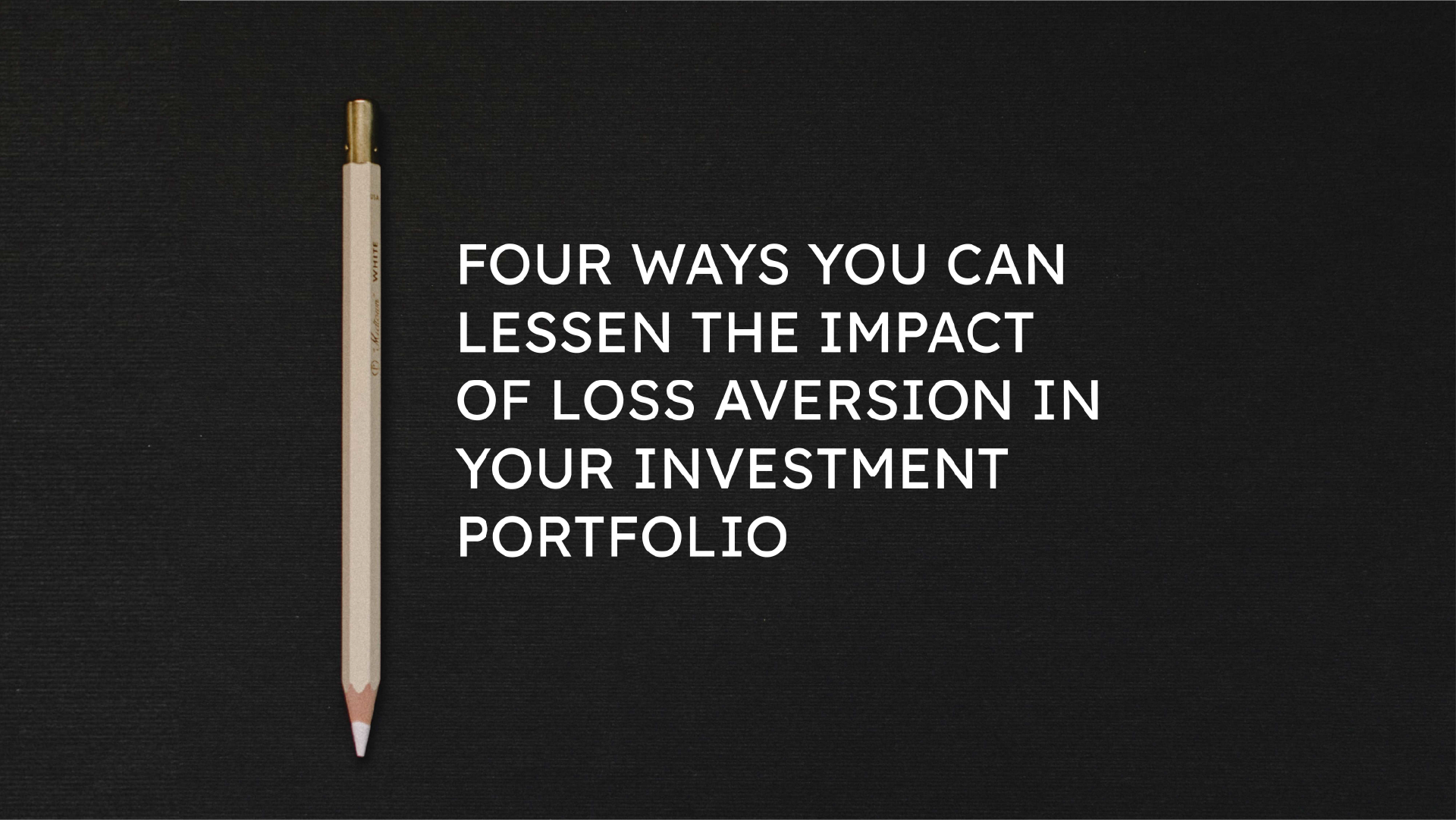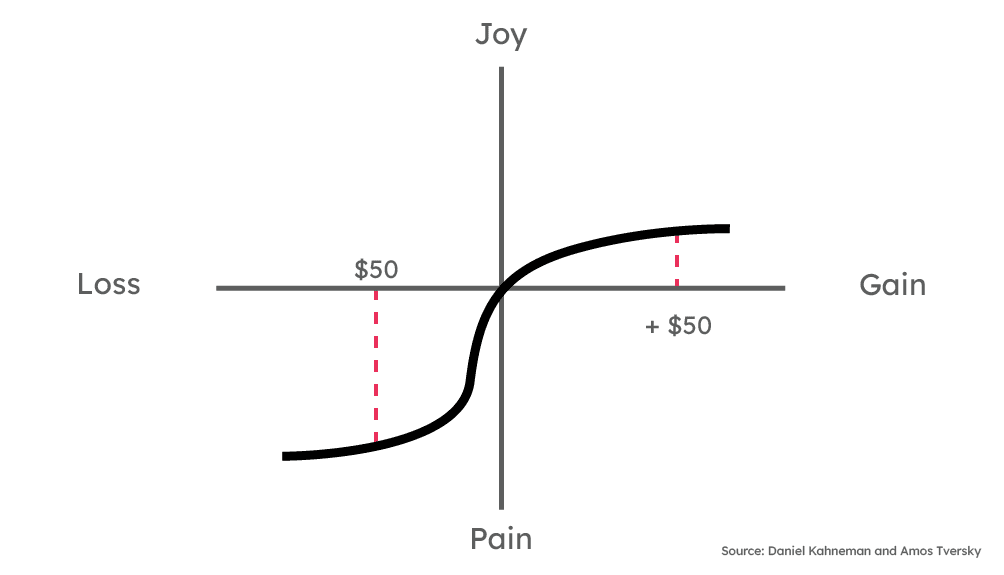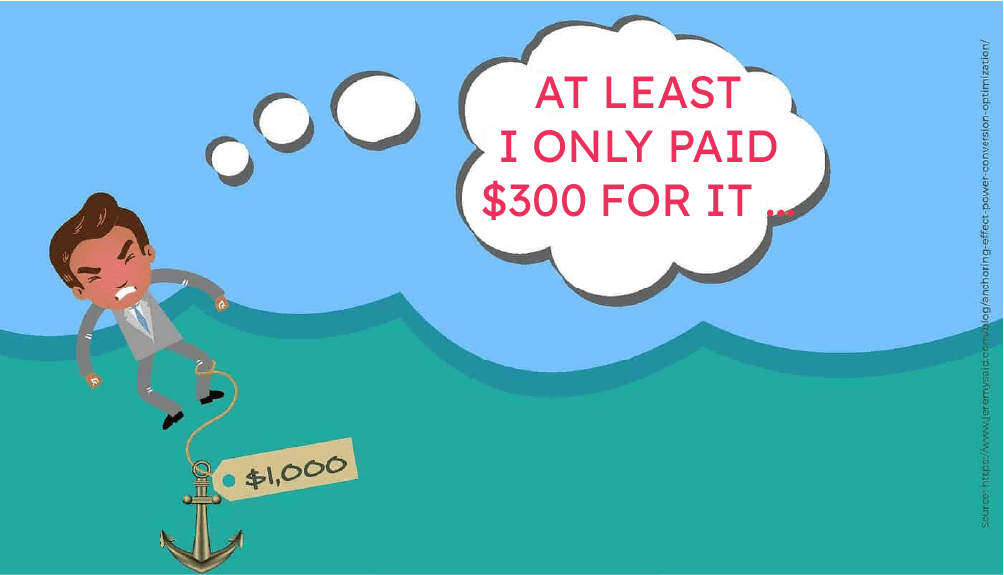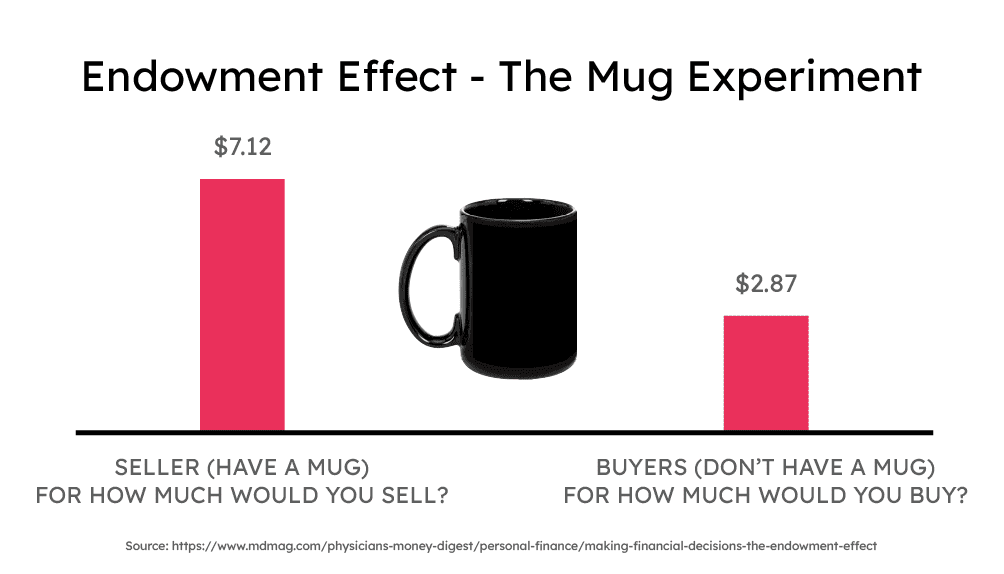
Having a healthy amount of fear can often save us from making bad decisions and keep us physically safe. If you’re hiking in the woods and you see a bear up ahead, it makes sense to stay away.
But when fear becomes a driving force in financial decisions, poor results often follow.
“Loss aversion” can be beneficial in that it keeps most of us from making obviously ruinous investment decisions. When fear outweighs rational decision-making, however, it can often create negative implications for your portfolio.
Fortunately, there are steps you can take to minimize the harmful impact emotionally-driven decisions have on investment results.
What is Loss Aversion?
In the field of behavioral finance, “prospect theory” suggests that psychologically, financial losses are twice as powerful as gains.(1) For example, suppose you’re watching cable news and you see one of the financial experts on your favorite channel say there’s a 50% chance that your portfolio will decline in value by $1,000 over the next month.
To consider it a measured bet, most people would require that for them to stay invested in the same portfolio, that other 50% probability would see them gaining at least $2,000 over the same period. In other words, investors view gains and losses differently.
The pain felt from losing money, even temporarily, affects us much more than the joy felt by gaining the same amount. The asymmetric reaction to gains and losses is illustrated in the graph below.

Prospect Theory finds that most investors are “loss averse,” meaning they have a stronger preference for avoiding financial losses than experiencing financial gains when faced with uncertainty (and unfortunately, the markets and investing itself is inherently uncertain, so this is almost a near-constant state for some).
This inherent behavioral bias often leads to ill-timed investment decisions as a defensive measure to postpone regret.
One study observed investor behavior month-by-month and determined that investors were only willing to sell their underperformers (more than their winners) in December, presumably for tax loss-harvesting purposes. Every other month, investors sold outperforming investments to realize gains.(2)
The researchers found that across the 10,000 investors observed, on average the investments that were sold went on to outperform the investments that were held.
Nobel prize-winner and pioneering behavioral economist Daniel Kahneman explained such behavior by theorizing, “When you sell a loser, you don’t just take a financial loss; you take a psychological loss from admitting you made a mistake. You are punishing yourself when you sell.”
The psychological impact of realizing a loss can have widespread repercussions. In his book Your Money and Your Brain, Jason Zweig writes that once investors realize they’ve made a mistake, they are often afraid to act for fear that they will make another one. He refers to this behavior as “portfolio paralysis.”
The impact loss aversion has on investment decisions can ultimately cause inconsistency between the risk and return characteristics of a portfolio and an investor’s long-term financial goals.
One study evaluated the effect of myopic loss aversion on portfolio performance to test the thesis that investors who are willing to go longer without evaluating their investments are willing to accept more risk (i.e., choose stocks over bonds).
In this context, myopic loss aversion is the combination of a greater sensitivity to financial losses with the tendency to frequently evaluate outcomes.
The study found that investors who evaluated their accounts more frequently underperformed over the long run; more specifically, researchers determined that “providing such investors with frequent feedback about their outcomes is likely to encourage their worst tendencies.”(3)
What Can Investors Do to Keep Loss Aversion in Check?
Research conducted by firms like DALBAR and Morningstar implies that investor behavior is a larger driver of portfolio performance than market movement or investment selection.(4)
On average, investors tend to underperform broad market indexes on a purely return basis—as well as the returns of the investments they own—largely due to poorly-timed trades.
Loss aversion may be the reason many clients fall short of their goals. On the bright side, there are solutions you can implement to minimize its impact.
Let’s look at four simple solutions you can implement today to lessen the impact of loss aversion tendencies in your own portfolio.
1) Create an Investment Plan And Stick To It
Selling a part of your portfolio to cash often serves as a relief valve in a sustained down market, but it can have negative long-term implications if poorly executed.
If your risk tolerance tilts more conservatively, then you should consider utilizing tactical investments that can quantitatively raise cash in an emotionless manner.
Short-term market movements are almost never good reasons for deviating from a long-term investment plan.
If you have aggressive long-term return targets, moving to cash out of fear in a down market can meaningfully impede progress; this is especially true if you are still on the sidelines for the subsequent recovery.
Investor education is often required to bridge the gap between return expectations and the ability to withstand short-term losses so that investors remain on track regardless of market distractions.
There can be as many different objectives, investment horizons, and attitudes about portfolio drawdowns as there are investors.
Developing an appropriate investment plan that aligns with your own beliefs—and then adhering to it—can help you prevent panic-selling when markets turn negative.
2) Reframe the Issue
The flip side of this coin is that some may delay realizing losses by holding onto losing investments for too long.
When loss aversion results in such behavior, it is often due to traits known as “anchoring” or the “endowment effect,” or a combination of both.
Anchoring describes how investors assess the current value of an investment in relation to its original purchase price, instead of analyzing its fundamental or technical merits. Many investors fall into a “breakeven trap” and refuse to sell an investment until the original cost is recovered.

Similarly, the endowment effect refers to the tendency of investors to assign more value to investments they already own. In either scenario, holding on to losing investments creates opportunity cost—the profit lost by choosing one investment over another.

Simply put, your portfolio must match your risk tolerance!
If a portfolio is outside of your comfort zone, don’t use it. Staying in line with your risk tolerance will help eliminate an emotional attachment to your investments.
3) Use Mental Accounting to Your Advantage
Loss aversion can lead you to avoid investments perceived as too risky, even if those investments are indeed suitable, to minimize the pain of short-term losses.
As a result, you may hold portfolios inconsistent with your future financial needs.
According to Nobel prize-winner Richard Thaler, “mental accounting” is the set of cognitive shortcuts that allows individuals and households to organize, evaluate, and keep track of financial activities. Whether consciously or unconsciously, investors often use mental accounting tricks to segregate gains and losses.
Let’s look at an example of mental accounting that everyone can understand: Tax refunds…
Most people view their tax refund as a bonus, even though it is technically money owed to them from their own paychecks. But because the amount is unexpected, many of us are more likely to blow our refunds on something unnecessary rather than budget for the same purchase throughout the year.
Mental accounting may also explain why many investors prefer using income and dividend distributions to meet cash flow needs rather than dip into their principal investment.
Use mental accounting to your advantage, however, by separating your portfolios into various sleeves, or portfolio goals.
For example, creating distinct buckets for cash reserves, retirement, and aspirational goals helps you see losses differently; a temporary drawdown within an aspirational portfolio may not cause as much alarm as if that same drawdown occurs in an aggregated portfolio that’s also used to meet near-term cash flow needs.

4) Review Portfolios Quarterly, At Most
The fourth solution is the hardest for most people: Stop looking at your investment portfolio every day, every week, or even every month.
“Myopic loss aversion” can cause overreactions to recent drawdowns in portfolio value. Instead of viewing portfolio performance in the context of long-term goals, investors often consider each investment on its own.
Consequently, investors resist investments that have recently experienced temporary losses in value, and portfolios then lean too heavily weighted towards fixed income and other low-volatility investments.
The frequency with which investors check the market or the performance of their investments exacerbates myopic loss aversion. Dwelling on one month or even one year of disappointing performance in an account that you cannot access for twenty years is irrational.
My best suggestion? Review your portfolio performance no more than quarterly to lessen the temptation to react and potentially derail your investment plan.
How Potomac Fund Management Can Help
If you’ve been frustrated trying to manage your own portfolio, or you’ve been working with a financial advisor and you’ve been disappointed by your investment performance, it’s easy to get emotional.
But adding emotion to the equation, as we’ve seen, doesn’t help. Potomac Fund Management offers investment solutions that are managed systematically to remove emotion from portfolio decisions.
Click here to get your Risk Score Analysis today to see if your portfolio lines up with the amount of risk you’re comfortable with taking.
Disclosure: This information is prepared for general information only and should not be considered as individual investment advice nor as a solicitation to buy or offer to sell any securities. This material does not constitute any representation as to the suitability or appropriateness of any investment advisory program or security. Please visit our FULL DISCLOSURE page.
- Kahneman, D. & Tversky, A. “Prospect Theory: An Analysis of Decision Under Risk.” Econometrica. March 1979.
- Odean, Terrance. “Are Investors Reluctant to Realize Their Losses?” The Journal of Finance, Vol. LIII, No. 5. October 1998.
- Thaler, Tversky, Kahneman, and Schwartz, “The Effect of Myopia and Loss Aversion on Risk Taking: An Experimental Test,” The Quarterly Journal of Economics, May 1997.
- DALBAR, Inc., “Quantitative Analysis of Investor Behavior,” 2016. Morningstar Investor Returns. http://www.morningstar.com/InvGlossary/investor-return.aspx
